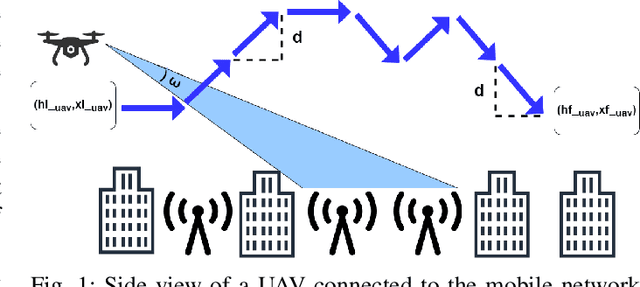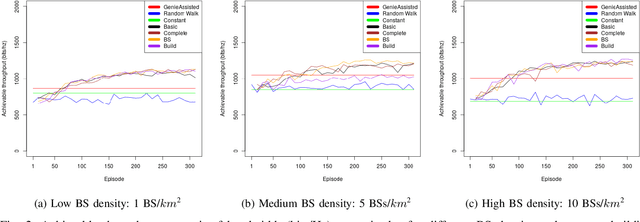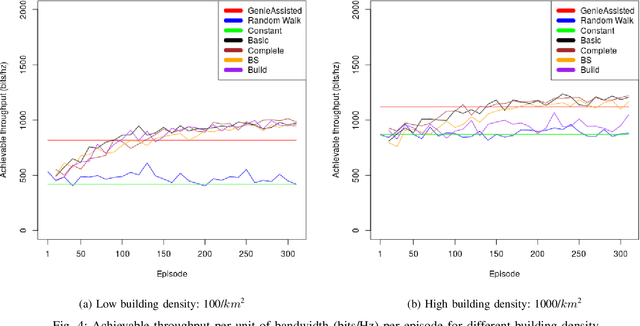Adaptive Height Optimisation for Cellular-Connected UAVs using Reinforcement Learning
Paper and Code
Jul 27, 2020



With the increasing number of \acp{uav} as users of the cellular network, the research community faces particular challenges in providing reliable \ac{uav} connectivity. A challenge that has limited research is understanding how the local building and \ac{bs} density affects \ac{uav}'s connection to a cellular network, that in the physical layer is related to its spectrum efficiency. With more \acp{bs}, the \ac{uav} connectivity could be negatively affected as it has \ac{los} to most of them, decreasing its spectral efficiency. On the other hand, buildings could be blocking interference from undesirable \ac{bs}, improving the link of the \ac{uav} to the serving \ac{bs}. This paper proposes a \ac{rl}-based algorithm to optimise the height of a UAV, as it moves dynamically within a range of heights, with the focus of increasing the UAV spectral efficiency. We evaluate the solution for different \ac{bs} and building densities. Our results show that in most scenarios \ac{rl} outperforms the baselines achieving up to 125\% over naive constant baseline, and up to 20\% over greedy approach with up front knowledge of the best height of UAV in the next time step.
 Add to Chrome
Add to Chrome Add to Firefox
Add to Firefox Add to Edge
Add to Edge